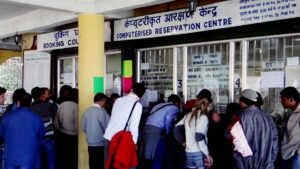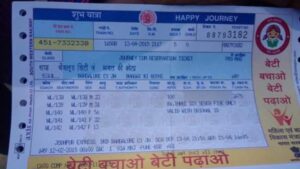Choosing an airplane seat: Best and the worst choices in various situations, including long haul or overbooked flights, turbulence, and air crashes

Introduction
When embarking on a journey, choosing an airplane seat can greatly affect the overall travel experience. What are the best and worst seats on an airplane? Well, the answer is not as straightforward as you might think. Different circumstances can influence your preference. Understanding the nuances of various seating options is vital to tailor your choice to your specific needs.
Various scenarios can significantly affect your decision, whether it’s an entirely booked flight, safety considerations in the unlikely event of an air crash, or the quest for comfort on long-haul flights. This comprehensive guide provides insight into selecting the best and worst seats on an airplane for different scenarios.
Best Seats for a Fully Booked Flight:
Fully booked or overbooked flights are becoming common these days and airlines often try to pack as many passengers in an aircraft as possible, and a little knowledge of the best and worst seat choices can alter your flight experience in a big way.
- Aisle Seats: Preferred by those who value mobility, aisle seats make standing up, stretching, and accessing the overhead bins easier. They also facilitate quicker exit upon landing.
- Window Seats: Providing an unbeatable view and a wall to lean against for sleep, window seats offer a less disturbed experience, especially for passengers not intending to move around much.
- Bulkhead Seats: These seats located directly behind dividers like walls or curtains offer spacious legroom. In addition, with no seat in front, you won’t experience any reclining seatbacks.
- Emergency Exit Seats: These seats, despite the responsibility that comes with them, offer significantly more legroom. However, these are not suitable for everyone due to the safety roles attached to them.
Worst Seats for a Fully Booked Flight:
- Middle Seats: Sandwiched between two passengers, middle seats are often deemed the worst due to limited personal space and the inconvenience of climbing over other passengers to get out.
- Seats near the Lavatories: Proximity to the lavatories can mean frequent disturbances from flush noises, odors, and people queuing nearby.
- Seats in the Back of the Plane: These seats tend to experience more engine noise and turbulence. Additionally, they are the last ones to deplane, which can be inconvenient if you have a tight connection.
Best Seats for an Air Crash:
While the probability of air crashes is incredibly low, safety-conscious passengers may prefer to still look at the best and worst seat options in the event of such an eventuality. However depending upon the cause and nature of the accident, this may not prove to be absolutely accurate but it is definitely worth noting the safest zones in an aircraft.
- Aisle Seats: In a potential emergency evacuation scenario, these seats allow for quicker access to the exits, reducing exit time.
- Window Seats: Research published by Time suggests that passengers sitting within five rows of an exit and closer to the window have slightly better survival rates.
- Seats Near the Front of the Plane: A 2007 study by Popular Mechanics found that passengers sitting near the front of an aircraft are more likely to survive a crash.
Worst Seats for an Air Crash:
- Middle Seats: In the center of large aircraft, these seats might be the furthest from the emergency exits, increasing evacuation time.
- Seats in the Back of the Plane: Although they’re perceived as safer, studies have revealed these might be less safe than those at the front in some crash situations.
- Seats Near the Wings: The wings carry fuel, which could pose a risk in the unlikely event of a crash.
Best Seats for Turbulence:
Turbulence is an important factor to consider when choosing your seat on an airplane. Different sections of the plane bounce off differently during a turbulence, hence this knowledge may come in handy.
- Seats Over the Wings: The aircraft’s center of gravity is located around the wings. Therefore, this area tends to feel more stable and less subject to the bouncing effect of turbulence, much like the fulcrum of a seesaw.
- Window Seats: Besides giving you something to lean on, a window seat can help orient your brain with the movement of the aircraft, reducing motion sickness.
Worst Seats for Turbulence:
- Seats at the Rear of the Plane: The tail of the plane can whip up and down during turbulence, making the sensation more noticeable and pronounced.
- Aisle Seats: While they offer more legroom, aisle seats can make you more aware of the cabin’s movements, potentially leading to more discomfort. Furthermore, unexpected turbulence could result in passengers being thrown off balance in the aisle, posing a potential risk.
Best Seats for a Long Haul Flight:
People are flying longer durations and many prefer direct, nonstop flights from point A to point B, resulting in long haul and ultra long haul flights becoming common. For such flights, it is better to choose a good seat, rather than having to endure a bad choice for 12 hour or more, cramped in a tin can at 40, 000 ft in the sky!
- Aisle Seats: The freedom to get up, move around, or even perform some in-flight exercises without disturbing others makes these seats a top choice for long-haul flights.
- Window Seats: For passengers aiming to sleep, watch in-flight movies, or just enjoy the view, these seats provide a peaceful environment with minimum disruptions.
- Bulkhead Seats: Their extra legroom makes them ideal for tall passengers or those who like to stretch out.
- Seats with Extra Legroom: These could be premium economy seats, emergency exit row seats, or seats near the bulkhead, and are a boon for a more comfortable journey.
Worst Seats for a Long Haul Flight:
- Middle Seats: Being crammed between two passengers for an extended period can be uncomfortable, making these seats less desirable.
- Seats near the Lavatories: The constant bustle of people going in and out, coupled with possible odors and noise, can be disruptive to rest or sleep.
- Seats in the Back of the Plane: Along with being the last to be served meals, they might experience more engine noise and vibrations.
Also Read – Road Trip Checklist That Helps To Plan Your Journey Like A Pro
FAQ – Choosing an Airplane Seat
Q1: Should you choose your seat on a plane?
A: Yes, it’s generally a good idea to choose your seat on a plane. Selecting your seat can allow you to improve your travel experience based on your individual needs and preferences. Factors such as legroom, easy access to exits, potential noise from the galley or lavatories, and the desire for a window view can influence your choice.
Q2: Which part of the airplane seat is the best?
A: The “best” part of an airplane seat depends on your personal needs and preferences. If you want to experience less turbulence, seats over the wings are preferable. For passengers who prioritize mobility or want to exit the plane quickly, aisle seats are advantageous. Those who want to enjoy the view, or need a wall to lean against to sleep, might prefer window seats. For extra legroom, the front row, bulkhead seats, and exit row seats are often considered the best.
Q3: What is the best seat in economy class?
A: In economy class, exit row seats and bulkhead seats are generally considered the best due to the extra legroom they offer. Seats towards the front of the plane are also desirable as they allow for quicker disembarking and may provide a quieter ride as they are further away from the engines. However, “best” can vary depending on personal preferences such as aisle vs window seat, proximity to lavatories, or sensitivity to turbulence.
Q4: Which are the worst seats on an airplane?
A: Generally, the worst seats on an airplane are considered to be the middle seats due to limited personal space and lack of direct aisle access. Seats near the lavatories can also be undesirable due to noise, odors, and frequent disturbances from people queuing. Additionally, the last row of the plane often doesn’t recline, has limited legroom, and is close to the noisy galley. However, personal preferences and specific flight conditions may influence what is considered a “worst” seat.
Conclusion – Choosing an Airplane Seat
Choosing an airplane seat for your needs doesn’t have to be an intimidating process. A careful assessment of your preferences, health considerations, and the specific travel situation can guide you. Remember, what’s “best” or “worst” is subjective to individual needs, and while this guide addresses the majority, personal comfort is king.
Along with this, consider early check-ins, frequent flyer programs, and seat upgrade options for a more personalized journey. Now that you know the best and worst seats on an airplane for different scenarios, you’re set to make a well-informed decision for your next travel experience!







